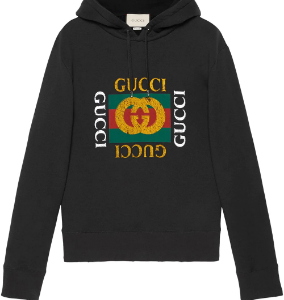Contact lenses have come a long way since they were first invented, and colored contact lenses are now widely popular for those who want to change the appearance of their eyes. With a variety of colors and styles available, colored contact lenses can be a fun and easy way to enhance your look.
However, with so many options available, it can be overwhelming to know where to start. In this comprehensive guide, we’ll cover everything you need to know about colored contact lenses, from how they work to how to choose the right ones for you.
How do colored contact lenses work?
Colored contact lenses work similarly to regular contact lenses, with a few key differences. The colored portion of the lens is typically made of a thin layer of material that’s designed to mimic the appearance of the iris. This can be done using a variety of methods, including printing or layering different colors to create a more natural look.
One important thing to note is that colored contact lenses are still medical devices and require a prescription from an eye doctor. This is because improperly fitting or low-quality lenses can cause serious eye problems, including infections, corneal ulcers, and even vision loss.
What types of colored contact lenses are there?
There are two main types of colored contact lenses: enhancement tints and opaque tints.
Enhancement tints are designed to enhance the natural color of your eyes. These lenses are typically translucent and have a subtle tint that enhances the natural color of your eyes. Enhancement tints are a good option if you want to enhance your eye color but still want a natural look.
Opaque tints, on the other hand, completely change the color of your eyes. These lenses are available in a wide range of colors, from natural-looking browns and greens to more dramatic colors like blue and purple. Opaque tints are a good option if you want a dramatic change in your eye color.
What colors are available?
Colored contact lenses are available in a wide range of colors, so you can choose the one that best suits your style and preferences. Some of the most popular colors include:
- Brown: A natural-looking option that’s perfect for those with brown or hazel eyes.
- Blue: A popular choice for those who want a dramatic change in eye color.
- Green: A good option for those with green or hazel eyes who want to enhance their natural eye color.
- Gray: A subtle and sophisticated option that’s great for those with lighter-colored eyes.
- Violet: A fun and playful option that’s perfect for special occasions or costume parties.
It’s important to note that not all colors will look good on everyone, so it’s important to choose a color that complements your skin tone and natural eye color.
How do I choose the right colored contact lenses?
Choosing the right colored contact lenses can be tricky, but there are a few things you can do to make the process easier.
First, consider your natural eye color. If you have dark brown eyes, for example, you may want to choose a more opaque tint to get the desired effect. If you have lighter-colored eyes, enhancement tints may be a better option.
It’s also important to consider your skin tone. If you have warm undertones, you may want to choose warmer colors like brown or honey. If you have cool undertones, cooler colors like blue or gray may be a better option.
Finally, it’s important to choose a reputable brand and follow the instructions carefully. Improper use or low-quality lenses can cause serious eye problems, so it’s important to take the process seriously.
Colored contact lenses have become a popular trend in recent years, allowing people to change their eye color or enhance their natural look. However, with so many myths and misconceptions surrounding these lenses, it can be difficult to know the facts. In this article, we will dive deep into everything you need to know about colored contact lenses.
Myth 1: You can’t wear colored contacts if you have perfect vision
This is a common myth surrounding colored contacts, but it is not true. Just like regular eyewear, colored contacts are available for those with 20/20 vision. Whether you want to change your eye color for a special occasion or simply enhance your natural look, colored contacts are a great option.
Myth 2: There is only one type of colored contacts
This is also a myth, as there are actually three different types of colored contacts available: visibility tint, enhancement tint, and opaque tint. Visibility tint lenses have a touch of blue or green added to help with insertion and removal, but they do not affect your eye color. Enhancement tint lenses enhance the natural look of your eyes and are ideal for people with light-colored eyes who want to add a pop of color. Opaque tint lenses can completely transform your eye color. The Bella contact lenses line offers a wide range of colored contacts for you to choose from.
Myth 3: You can only choose from the colored contacts available in the market
This is not true either. You can actually get customized tints for your eyes by contacting lens manufacturers who specialize in these services. If you don’t like what’s available in the market or the Bella contact lenses collection, you can create your own tints.
Myth 4: Colored contacts are only for cosmetic purposes
While many people wear colored contacts for cosmetic purposes, they are not the only reason to wear them. Athletes often wear colored contacts to improve their visual performance. For example, a tennis player may opt for green-tinted contacts to help them see the ball better.
Myth 5: Colored contacts do not obstruct vision
While visibility and enhancement tints do not obstruct vision, opaque tints can be a different story. The size of your pupils changes based on the amount of light present in a room. If your pupils dilate, they may grow bigger than the clear part of the opaque lenses, causing slight vision issues.
Myth 6: Colored contacts are not safe
This is a common concern among people who are new to colored contacts. However, colored contacts are absolutely safe when prescribed and fitted by a doctor. It’s important to follow the after-care instructions carefully to prevent infections or irritation.
Myth 7: Colored contacts are safe to swap if they are zero-power
This is not true. Even if you are only wearing colored contacts for cosmetic purposes, they are still medical devices and should not be shared with others. Swapping contacts with friends can lead to serious, life-threatening infections.
Choosing the Right Contact Lenses
When it comes to choosing the right contact lenses, it’s important to consult with your eye specialist. There are several factors to consider when selecting the right type of contact lens, including your refractive error, the duration of contact lenses you wear, the tolerance level of your eyes, your desires, and how well you can care for your lenses.
Types of Contact Lenses
There are several types of contact lenses to choose from, including daily wear, extended wear, disposable, toric, and colored lenses. Daily wear lenses must be taken out and cleaned each night and are replaced on a regular schedule, which can vary from two weeks to three months. Anesthesia contact lenses can be replaced once every three to six months, depending on the type. Extended wear lenses are designed to be worn overnight
In conclusion, colored contact lenses can be a fun and easy way to enhance your look, but it’s important to choose the right ones and use them properly.



